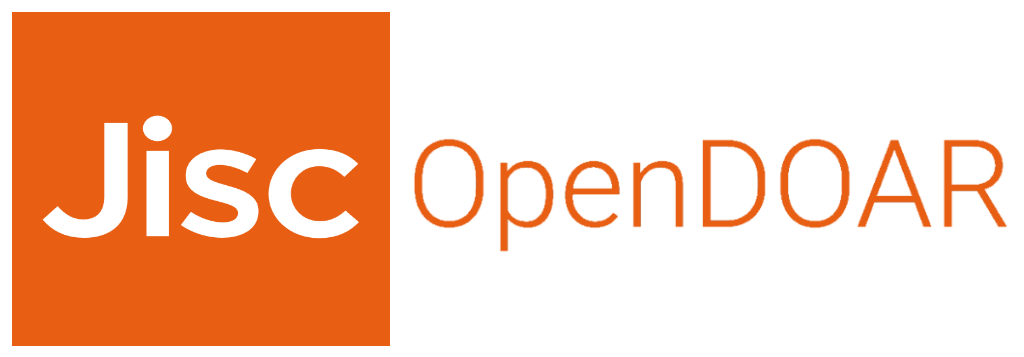Mostrar el registro sencillo del ítem
Caracterización molecular y bioquímica de la enzima Cisteína Sintasa en la bacteria Pseudomonas aeruginosa mediante análisis in silico, como posible blanco terapéutico en este patógeno
| dc.contributor.advisor | Romero Calderón, Ibeth Cristina | |
| dc.contributor.author | Farfán Gómez, Laura Nicole | |
| dc.contributor.author | Molina Serna, Karen Tatiana | |
| dc.date.accessioned | 2021-06-28T19:45:44Z | |
| dc.date.available | 2020-03 | |
| dc.date.available | 2021-06-28T19:45:44Z | |
| dc.date.issued | 2020-03 | |
| dc.identifier.uri | https://repositorio.unicolmayor.edu.co/handle/unicolmayor/301 | |
| dc.description.abstract | Pseudomonas aeruginosa, es una bacteria que causa infecciones asociadas a la atención en salud y representa un problema de salud pública, por su capacidad de generar resistencia a los medicamentos usados en el tratamiento convencional, es por esto que se requiere del estudio de nuevos blancos terapéuticos para el desarrollo de nuevas terapias. En este sentido, la enzima Cisteína Sintasa (CS) reviste gran interés debido a que no se encuentra en el humano, cumple un papel importante en la supervivencia de algunos microorganismos frente al estrés oxidativo y ha sido asociada a fenotipos de resistencia a medicamentos. En el presente proyecto, se caracterizó in silico la enzima CS en P. aeruginosa; usando herramientas bioinformáticas se identificaron 3 posibles isoformas de la enzima, de las cuales sólo dos (CysA y CysB) presentaron todos los dominios característicos de la familia de proteínas CS; los modelos tridimensionales de las 3 isoformas predichos mediante I-TASSER mostraron una alta calidad y confiabilidad para poder ser usados en estudios posteriores. Por otro lado, los análisis filogenéticos y de comparación de secuencias aminoacídicas permitieron establecer que las enzimas CS en esta bacteria difieren significativamente con la enzima ortóloga más cercana en el humano la Cistationina Beta Sintasa (CBS). Los resultados obtenidos en este estudio servirán de base para la validación funcional de CS como posible blanco terapéutico en P. aeruginosa y la búsqueda de inhibidores específicos contra esta enzima que permitan desarrollar una terapia alternativa y selectiva contra las infecciones producidas por esa bacteria. | spa |
| dc.description.abstract | Pseudomonas aeruginosa, is a bacterium that causes infections associated with health care and represents a public health problem, due to its ability to generate resistance to drugs used in conventional treatment, which is why it is necessary to study new therapeutic targets for the development of new therapies. In this sense, the enzyme Cysteine Synthase (CS) is of great interest because it is not found in humans, it plays an important role in the survival of some microorganisms against oxidative stress and has been associated with phenotypes of drug resistance. In the present project, the CS enzyme in P. aeruginosa was characterized in silica; Using bioinformatic tools, 3 possible isoforms of the enzyme were identified, of which only two (CysA and CysB), all the characteristic domains of the CS protein family; The three-dimensional models of the 3 isoforms predicted using I-TASSER protocols have a high quality and reliability to be used in subsequent studies. On the other hand, phylogenetic analysis and comparison of amino acid sequences allowed to establish the CS enzymes in this bacterium differ significantly with the closest orthologous enzyme in human cystathionine beta synthase (CBS). The results obtained in this study will serve as a basis for the functional validation of CS as a possible therapeutic target in P. aeruginosa and the search for specific inhibitors against this enzyme that develops an alternative and selective therapy against infections caused by this bacterium. | eng |
| dc.description.tableofcontents | Resumen 13 Introducción 15 1. Objetivos 17 1.1 Objetivo general 1.2 Objetivos específicos 2. Antecedentes 18 3. Marco teórico 21 4. Diseño metodológico 32 5. Resultados 36 6. Discusión 53 7. Conclusiones 56 8. Referencias bibliográficas 57 | spa |
| dc.format.extent | 92p. | spa |
| dc.format.mimetype | application/pdf | spa |
| dc.language.iso | spa | spa |
| dc.publisher | Universidad Colegio Mayor de Cundinamarca | spa |
| dc.rights | Derechos Reservados-Universidad Colegio Mayor de Cundinamarca, 2020 | spa |
| dc.rights.uri | https://creativecommons.org/licenses/by-nc-sa/4.0/ | spa |
| dc.title | Caracterización molecular y bioquímica de la enzima Cisteína Sintasa en la bacteria Pseudomonas aeruginosa mediante análisis in silico, como posible blanco terapéutico en este patógeno | spa |
| dc.type | Trabajo de grado - Pregrado | spa |
| dc.description.degreelevel | Pregrado | spa |
| dc.description.degreename | Bacteriólogo(a) y Laboratorista Clínico | spa |
| dc.publisher.faculty | Facultad de Ciencias de la Salud | spa |
| dc.publisher.place | Bogotá D.C. | spa |
| dc.publisher.program | Bacteriología y Laboratorio Clínico | spa |
| dc.relation.references | Gellatly S. & Hancock R. Pseudomonas aeruginosa: new insights into pathogenesis and host defenses. Pathogens and Disease. (2013). 67: 159–173. | spa |
| dc.relation.references | Villa M., Cortés A., Leal L., Meneses A. & Meléndez P. Resistance to antibiotics in Pseudomonas aeruginosa in Colombian hospitals. Rev. chil. infectol. (2013). 30 (6): 605-610. | spa |
| dc.relation.references | Ruiz P., & Cantón R. Epidemiology of antibiotic resistance in Pseudomonas aeruginosa. Implications for empiric and definitive therapy. Rev Esp Quimioter. (2017). 30 (Suppl. 1): 8-12. | spa |
| dc.relation.references | Díaz A., Vivas R., Puerta L., Ahumedo M., Arévalo L., Cabrales R & Herrera A. Biofilms like expression of quorum sensing mechanism: A revision. Av Periodon Implantol. (2011). Vol 23, 3: 195-201. | spa |
| dc.relation.references | Hernández A., Yagüe G., García E., Simón M., Moreno L., Canteras M., & Gómez, J. Infecciones nosocomiales por Pseudomonas aeruginosa multiresistente incluido carbapenémicos: factores predictivos y pronósticos. Estudio prospectivo 2016-2017. Rev Esp Quimioter. (2018) ; 31 (2): 123-130. | spa |
| dc.relation.references | Zowalaty M., Thani A., Webster T., Zowalaty A., Schweizer H., Nasrallah G., Marei H., & Ashour H. Pseudomonas aeruginosa: arsenal of resistance mechanisms, decades of changing resistance profiles, and future antimicrobial therapies. Future Microbiol. (2015). 10 (10), 1683– 1706 | spa |
| dc.relation.references | Centers for Disease Control and Prevention. Pseudomonas aeruginosa in Healthcare Settings. [Internet]. [Revisado marzo 2019]. Available from: https://www.cdc.gov/hai/organisms/pseudomonas.html | spa |
| dc.relation.references | Maimone S. PSEUDOMONAS AERUGINOSA. COdeINEP control de infecciones y epidemiologia. [Internet] 2004 [Revisado en noviembre 2019]. Available from: https://codeinep.org/wp-content/uploads/2017/02/PSEUDOMONAS-AERUGINOSA.pdf | spa |
| dc.relation.references | Peñaloza H., Noguera L., Riedel C & Bueno S. Expanding the Current Knowledge About the Role of Interleukin-10 to Major Concerning Bacteria. Front Microbiol. (2018); 9 : 2047. | spa |
| dc.relation.references | Christophe B., Agnès R & Jean-Marc G. Escherichia coli biofilms. Curr Top Microbiol Immunol. (2008) 322 : 249–289. | spa |
| dc.relation.references | Sturgill G., Toutain C., Komperda J., O’Toole G & Rather P. Role of CysE in production of an extracellular signaling molecule in Providencia stuartii and Escherichia coli: loss of CysE enhances biofilm formation in Escherichia coli. J Bacteriol. (2004) 186 : 7610–7617. | spa |
| dc.relation.references | Singh P., Brooks J., Ray V., Mandel M & Visick K. CysK plays a role in biofilm formation and colonization by Vibrio fischeri. Appl Environ Microbiol. (2015) ; 81 : 5223–5234. | spa |
| dc.relation.references | Diner E., Beck C., Webb J., Low D & Hayes C. Identification of a target cell permissive factor required for contact-dependent growth inhibition (CDI). (2012). Genes Dev 26, 515 | spa |
| dc.relation.references | Kaundal S., Uttam M & Thakur K. Dual Role of a Biosynthetic Enzyme, CysK, in Contact Dependent Growth Inhibition in Bacteria. PLoS ONE (2016). 11 (7) : e0159844. | spa |
| dc.relation.references | Turnbull A & Surette MG. L-Cysteine is required for induced antibiotic resistance in actively swarming Salmonella enterica serovar Typhimurium. Microbiology. (2008) ; 154 : 3410–3419. | spa |
| dc.relation.references | Becker MA., Kredich NM & Tomkins GM.The purification and characterization of Oacetylserine sulfhydrylase-A from Salmonella typhimurium. J. Biol Chem. (1969). 10 ; 244 (9) : 2418-27. | spa |
| dc.relation.references | Turnbull A & Surette MG. Cysteine biosynthesis, oxidative stress and antibiotic resistance in Salmonella typhimurium. Res Microbiol. (2010) ; 161 : 643–650. | spa |
| dc.relation.references | Becker MA., Kredich NM & Tomkins GM.The purification and characterization of Oacetylserine sulfhydrylase-A from Salmonella typhimurium. J. Biol Chem. (1969). 10 ; 244 (9) : 2418-27. | spa |
| dc.relation.references | Ågren D., Schnell R & Schneider. The C-terminal of CysM from Mycobacterium tuberculosis protects the aminoacrylate intermediate and is involved in sulfur donor selectivity. FEBS Letters 583 (2009) 330–336. | spa |
| dc.relation.references | Brunner K., Maric S., Reshma R., Almqvist H., Seashore-Ludlow B., Gustavsson A., Poyraz Ö., Yogeeswari P., Lundbäck T., Vallin M., Sriram D., Schnell R & Schneider G. Inhibitors of the Cysteine Synthase CysM with Antibacterial Potency against Dormant Mycobacterium tuberculosis. J Med Chem. (2016). 59 (14) : 6848-5. | spa |
| dc.relation.references | James K., Lithgow., Emma J., Hayhurst., Gerald Cohen., Aharonowitz Y & Simon J. Role of a Cysteine Synthase in Staphylococcus aureus. J Bacteriol. (2004) 186 (6) : 1579-90. | spa |
| dc.relation.references | Campanini B., Pieroni M., Raboni S., Bettati S., Benoni R., Pecchini C., Costantino G & Mozzarelli A. Inhibitors of the sulfur assimilation pathway in bacterial pathogens as enhancers of antibiotic therapy. Curr Med Chem. (2015) ; 22 : 187–213. | spa |
| dc.relation.references | Romero I., Téllez J., Yamanaka L.E., Steindel M., Romanha A.J., & Grisard E.C. Transsulfuration is an active pathway for cysteine biosynthesis in Trypanosoma rangeli. Parasites & vectors. (2014). : 7, 197. | spa |
| dc.relation.references | Romero I., Téllez J., Romanha A.J., Steindel M., & Grisard E.C. Upregulation of Cysteine Synthase and Cystathionine β-Synthase Contributes to Leishmania braziliensis Survival under Oxidative Stress. Antimicrobial agents and chemotherapy. (2015). 59 (8) : 4770–4781. | spa |
| dc.relation.references | Téllez J., Romero I., Soares M., Steindel M & Romanha A. Knockdown of Host Antioxidant Defense Genes Enhances the Effect of Glucantime on Intracellular Leishmania braziliensis in Human Macrophages. Antimicrob Agents Chemother. (2017) 27 ; 61 (7). | spa |
| dc.relation.references | Gillin, F & Diamond S. Entamoeba histolytica and Giardia lamblia: effects of cysteine and oxygen tension on trophozoite attachment to glass and survival in culture media. Exp. Parasitol. (1981) 52, 9–17. | spa |
| dc.relation.references | Fahey R., Newton G., Arrick B., Overdank-Bogart T & Aley S. Entamoeba histolytica: a eukaryote without glutathione metabolism. Science. (1984). 224, 70–72. | spa |
| dc.relation.references | Nagpal I., Raj I., Subbarao N & Gourinath S. Virtual screening, identification and in vitro testing of novel inhibitors of O-acetyl-L- serine sulfhydrylase of Entamoeba histolytica. (2012). PLoS ONE 7:e30305. | spa |
| dc.relation.references | A. Yagci. Analysis of quorum sensing-dependent virulence factor production and its relationship with antimicrobial susceptibility in Pseudomonas aeruginosa respiratory isolates. Clin Microbiol Infect (2010) ; 16: 1770–1775 | spa |
| dc.relation.references | Tanya Strateva & Ivan Mitov. Contribution of an arsenal of virulence factors to pathogenesis of Pseudomonas aeruginosa infections. Ann Microbiol (2011) 61:717–732 | spa |
| dc.relation.references | Cabrera Y. Adaptación de Pseudomonas aeruginosa a la infección crónica en fibrosis quística: identificación de cepas con peptidoglicano de reducida capacidad inflamatoria y/o resistencia a la lisozima. Universitat de les illes balears. (2015). | spa |
| dc.relation.references | Callicó A., Cedré B., Sifontes S., Torres V., Pino Y., Callís A & Sara C. Caracterización fenotípica y serológica de aislamientos clínicos de Pseudomonas aeruginosa. VacciMonitor 1 Año 13 No. 3 | spa |
| dc.relation.references | Tanya S & Ivan M. Contribution of an arsenal of virulence factors to pathogenesis of Pseudomonas aeruginosa infections. Ann Microbiol (2011) 61:717–732. | spa |
| dc.relation.references | Moradali M., Ghods S & Bernd H. Pseudomonas aeruginosa Lifestyle: A Paradigm for Adaptation, Survival, and Persistence. Front. Cell. Infect. Microbiol. (2017). 15 ; 7 : 39 | spa |
| dc.relation.references | Garcia M., Morelloc E., Garnierd J., Barraultd C., Garniera M., Burucoaa C., Lecrona J., SiTahar M., Bernardd F & Charles Bodet. Pseudomonas aeruginosa flagellum is critical for invasion, cutaneous persistence and induction of inflammatory response of skin epidermis. (2018). VOL. 9, NO. 1, 1163–1175. | spa |
| dc.relation.references | WHO. Report on the burden of endemic health care-associated infection worldwide. Ginebra. (2011). [Internet]. Avalaible from: https://apps.who.int/iris/bitstream/handle/10665/80135/9789241501507_eng.pdf | spa |
| dc.relation.references | Parkins M., Somayaji R & Waters V. Epidemiology, biology, and impact of clonal Pseudomonas aeruginosa infections in cystic fibrosis. Clin Microbiol Rev. (2018). 31:e00019-18 | spa |
| dc.relation.references | Ossa A., Echeverri L., Santos Z., García M., Agudelo Y., Ramírez F & Ospina S. Factores de riesgo para infección por Pseudomonas aeruginosa multi-resistente en un hospital de alta complejidad. Rev Chilena Infectol (2014). 31 (4): 393-399. | spa |
| dc.relation.references | Restrepo J., Macias I & Ochoa F. Factores de riesgo asociados a infecciones por bacterias multirresistentes derivadas de la atención en salud en una institución hospitalaria de la ciudad de Medellín 2011-2014. Infectio. (2016) ; 20 (2) : 77-83 | spa |
| dc.relation.references | Larry M., Bush M & Perez M. Infecciones por Pseudomonas y patógenos relacionados. Last full review/revision. (2018). [Internet]. [Consultado diciembre 2019]. Available from: https://www.msdmanuals.com/es/professional/enfermedades-infecciosas/bacilosgramnegativos/infecciones-por-pseudomonas-y-pat%C3%B3genos-relacionados | spa |
| dc.relation.references | Dias V., Resende J., Bastos A., Bastos L., Bastos V. Epidemiological, Physiological, and Molecular Characteristics of a Brazilian Collection of Carbapenem-Resistant Acinetobacter baumannii and Pseudomonas aeruginosa. Microb Drug Resist. (2017) 23 (7) : 852-863. | spa |
| dc.relation.references | Jason C., Gallagher J & Satlin. Ceftolozane-Tazobactam for the Treatment of MultidrugResistant Pseudomonas aeruginosa Infections: A Multicenter Study. Ceftolozane-Tazobactam for MDR Pseudomonas. Open Forum Infectious Diseases. (2018). | spa |
| dc.relation.references | Montravers P., Harpan A & Elise Guivarc. Current and Future Considerations for the Treatment of Hospital-Acquired Pneumonia. Adv Ther. (2016). 33 : 151 – 166. | spa |
| dc.relation.references | Bodia M & Garnacho J. Pseudomonas aeruginosa: tratamiento combinado frente a monoterapia. Med Intensiva. (2007). 31 (2) : 83 - 7. | spa |
| dc.relation.references | Pintado V. Fármacos antiguos y nuevos en el tratamiento de la infección por bacterias multirresistentes. Rev Esp Quimioter (2016) 29 (Suppl. 1) : 39 - 42. | spa |
| dc.relation.references | Righi E., Peri A., Harris P., Wailan A., Liborio M., Lane S & Paterson D. Global prevalence of carbapenem resistance in neutropenic patients and association with mortality and carbapenem use: systematic review and meta-analysis. Journal of Antimicrobial Chemotherapy. (2017). Volume 72, Issue 3 : 668–677. | spa |
| dc.relation.references | Heba Y., Al Dawodeyah., Obeidat N., Qatouseh L & Shehabi A. Antimicrobial resistance and putative virulence genes of Pseudomonas aeruginosa isolates from patients with respiratory tract infection. GERMS. (2018). 8 (1) : 31 - 40. | spa |
| dc.relation.references | Elena B., Fuente B., Núñez E & W.Hancock. Pseudomonas aeruginosa: all roads lead to resistance. Trends in Microbiology. (2011). Vol 19, Issue 8 : 419-426. | spa |
| dc.relation.references | Pang Z., Raudonis R., Glick B., Lin T & Cheng Z. Antibiotic resistance in Pseudomonas aeruginosa: mechanisms and alternative therapeutic strategies. Biotechnol Adv. (2019) 37 (1) : 177 - 192. | spa |
| dc.relation.references | Drenkard E. Antimicrobial resistance of Pseudomonas aeruginosa biofilms. Microbes Infect. (2003) 5 (13) : 1213 - 9. | spa |
| dc.relation.references | Sandoval M. & Aldana. Adaptive resistance to antibiotics in bacteria: a systems biology perspective. WIREs Syst Biol Med. (2016) 8 : 253 – 267. | spa |
| dc.relation.references | Beinert, H & Kiley P. Fe-S proteins in sensing and regulatory functions. Curr. Opin. Chem. Biol (1999). 3 : 152 – 157. | spa |
| dc.relation.references | Cortes J., Cuervo S., Urdaneta A., Potdevin G., Arroyo P & Bermúdez D. Identifying and controlling a multiresistant Pseudomonas aeruginosa outbreak in a Latin-American cancer centre and its associated risk factors. Braz J Infect Dis. (2009) 13 (2) : 99 - 103. | spa |
| dc.relation.references | Dewick P. Medicinal natural products: a biosynthetic approach. Editorial WILEY. Ed. 2 [Internet]. [Consultado noviembre 2019]. Available from: https://books.google.com.co/books?hl=es&lr=&id=A4zptjOJfKQC&oi=fnd&pg=PA1&dq=Medi cinal+natural+products:+a+biosynthetic+approach&ots=whkrLXOIYg&sig=U5As6CERLHXFL tNuec7QTZ6zj24#v=onepage&q=Medicinal%20natural%20products%3A%20a%20biosynthetic %20approach&f=false | spa |
| dc.relation.references | Mukai T., Crnkovic A., Umehara T., Ivanova NN., Kyrpides NC & Söll D. RNAdependent cysteine biosynthesis in bacteria and archaea. mBio. (2017). 8 : e00561 - 17. | spa |
| dc.relation.references | Guédon E & Martin I. Cysteine Metabolism and Its Regulation in Bacteria. In: Wendisch V.F. (eds) Amino Acid Biosynthesis - Pathways, Regulation and Metabolic Engineering. (2006) Microbiology Monographs, vol 5. Springer, Berlin, Heidelberg. | spa |
| dc.relation.references | Ochoa R., Flórez A., Muskus C. DETECCIÓN IN SILICO DE SEGUNDOS USOS DE MEDICAMENTOS CON POTENCIAL ACCIÓN LEISHMANICIDA. Rev. ing. biomed. (2011). vol.5 no.10 | spa |
| dc.relation.references | Schechner V., Nobre V., Kaye K., Leshno M., Giladi M & Rohner P. Gram negative bacteremia upon hospital admission: when should Pseudomonas aeruginosa be suspected?. Clin Infect Dis. (2009) ; 48 : 580 – 586. | spa |
| dc.relation.references | Artimo P, Jonnalagedda M & Arnold K. ExPASy: SIB bioinformatics resource portal. Nucleic Acids Res. (2012) 40 (Web Server issue) : 597 – 603. | spa |
| dc.relation.references | El-Gebali S, Mistry J & Bateman A. The Pfam protein families database in 2019. Nucleic Acids Res. (2019) 47 : 427 – 432. | spa |
| dc.relation.references | Kumar S, Stecher G, Li M, Knyaz C & Tamura K. MEGA X: Molecular Evolutionary Genetics Analysis across Computing Platforms. Mol Biol Evol. (2018) 35 (6) : 1547 – 1549. | spa |
| dc.relation.references | Vasfi M., Mehdi M., Mohammad R., Mohammad M., Dadashpour D., Navid & Alamian S. Sequencing and In Silico Multi-aspect Analysis of S1 Glycoprotein in 793/B Serotype of Infectious Bronchitis Virus Isolated From Iran in 2003 and 2011. Archives of Razi Institute. (2018) 73. 183-198. | spa |
| dc.relation.references | Yang J, Yan R, Roy A, Xu D, Poisson J & Zhang Y. The I-TASSER Suite: protein structure and function prediction. Nat Methods. (2015) 12 (1) : 7–8. | spa |
| dc.relation.references | Markus W., Manfred J & Sippl. ProSA-web: interactive web service for the recognition of errors in three-dimensional structures of proteins, Nucleic Acids Research. (2007). Volume 35, Issue 2 : 407 – 410. | spa |
| dc.relation.references | Kwofie S., Enninful K & Yussif J. Molecular Informatics Studies of the Iron-Dependent Regulator (ideR) Reveal Potential Novel Anti-Mycobacterium ulcerans Natural Product-Derived Compounds. Molecules. (2019) 24 (12) : 2299. | spa |
| dc.relation.references | Bhattacharya M., Hota A & Kar A. In silico structural and functional modelling of Antifreeze protein (AFP) sequences of Ocean pout (Zoarces americanus, Bloch & Schneider 1801). J Genet Eng Biotechnol. (2018) 16 (2) : 721–730. | spa |
| dc.relation.references | Ting W & Thomas S. Three-stage Assembly of the Cysteine Synthase Complex from Escherichia coli. JOURNAL OF BIOLOGICAL CHEMISTRY. (2012). Vol. 287 N. 6, pp. 4360 –4367. | spa |
| dc.relation.references | Ting W & Thomas S. Three-stage Assembly of the Cysteine Synthase Complex from Escherichia coli. JOURNAL OF BIOLOGICAL CHEMISTRY. (2012). Vol. 287 N. 6, pp. 4360 –4367. | spa |
| dc.relation.references | Enea S., Barbara C., Stefano B., Samanta R., Steven L., Paul F. & Andrea M. A Two-step Process Controls the Formation of the Bienzyme Cysteine Synthase Complex. THE JOURNAL OF BIOLOGICAL CHEMISTRY (2010) Vol. 285 No. 17 pp. 12813–1282. | spa |
| dc.relation.references | Olga S., Olivier P., Jean-Yves C., Antoine D., Tarek M & Isabelle Martin-V. CymR, the master regulator of cysteine metabolism in Staphylococcus aureus, controls host sulphur source utilization and plays a role in biofilm formation. Molecular Microbiology (2009). 73 (2): 194– 211 | spa |
| dc.relation.references | Katharina B., Selma M., Rudraraju S., Helena A., Brinton S., AnnaLena G., Ömer P., Perumal Y., Thomas L., Michaela V., Dharmarajan S., Robert S & Gunter S. Inhibitors of the Cysteine Synthase CysM with Antibacterial Potency against Dormant Mycobacterium tuberculosis. J. Med. Chem. (2016). 59 : 6848−6859. | spa |
| dc.relation.references | Satendra S., Gaurav S., Rohit F., Atul K., Budhayash G & Sunil K. Molecular Dynamic Simulation and Inhibitor Prediction of Cysteine Synthase Structured Model as a Potential Drug Target for Trichomoniasis. BioMed Research International. (2013). 15pg. | spa |
| dc.relation.references | Roberto B., Omar D., Gianluca P., Christopher S., Nina F., Andrea M., Stefano B & Barbara C. Modulation of E. coli serine acetyltransferase catalytic activity in the cysteine synthase complex. Research Letter. (2017). | spa |
| dc.rights.accessrights | info:eu-repo/semantics/closedAccess | spa |
| dc.rights.creativecommons | Atribución-NoComercial-CompartirIgual 4.0 Internacional (CC BY-NC-SA 4.0) | spa |
| dc.subject.lemb | Patógenos | |
| dc.subject.lemb | Ortólogas | |
| dc.subject.lemb | Multirresistentes | |
| dc.subject.proposal | Pseudomonas aeruginosa | spa |
| dc.subject.proposal | Cisteína sintasa | spa |
| dc.subject.proposal | Enzima | spa |
| dc.subject.proposal | Blancos de acción | spa |
| dc.subject.proposal | Terapia selectiva | spa |
| dc.type.coar | http://purl.org/coar/resource_type/c_7a1f | spa |
| dc.type.coarversion | http://purl.org/coar/version/c_970fb48d4fbd8a85 | spa |
| dc.type.content | Text | spa |
| dc.type.driver | info:eu-repo/semantics/bachelorThesis | spa |
| dc.type.redcol | https://purl.org/redcol/resource_type/TP | spa |
| dc.type.version | info:eu-repo/semantics/publishedVersion | spa |
| dc.rights.coar | http://purl.org/coar/access_right/c_16ec | spa |



















